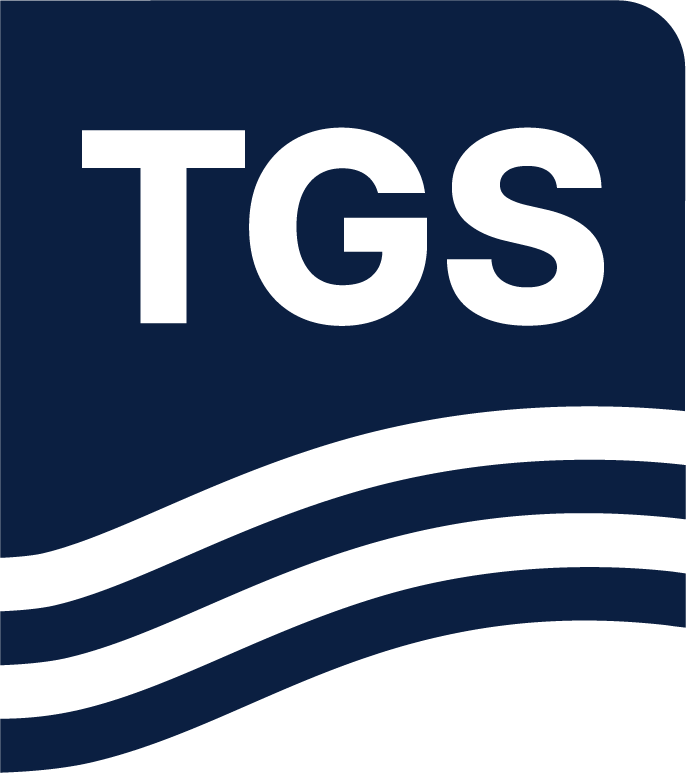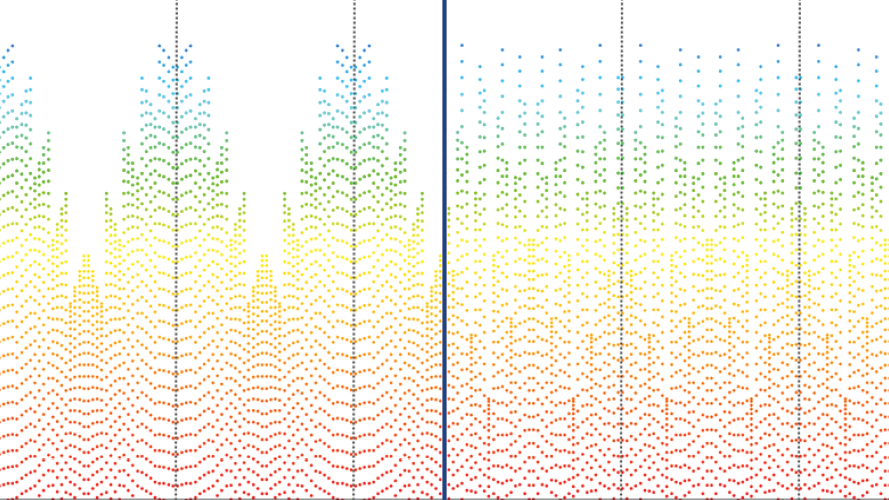Offset Sampling
Advantages of Offset Sampling
Leveraging Longer Offsets for Deeper Geological Imaging
Longer offsets can be beneficial to the imaging of deeper geology by improving the availability of high-angle reflections for amplitude-based reservoir property estimation and for the recovery of deep velocity model updates using diving wave information in Full Waveform Inversion.
The rule of thumb for diving wave FWI is that model updates can be recovered for depths in the range of one-sixth to one-third of the maximum offset recorded (and deeper updates can be recovered for the same offset range using reflection FWI), however, the maximum useful offset for diving waves is determined by the signal-to-noise ratio (SNR). If a representative vertical velocity function is available for the survey area, modeling of the FWI sensitivity kernels (see bottom image) is a more reliable indicator of FWI-based offset requirements.
Wide-tow multi-source solutions with as many as six sources laterally distributed over a distance as large as 350 m enable highly efficient large streamer spreads to be towed, whilst simultaneously acquiring a uniform near-offset distribution for all common midpoint (CMP) sublines.
Acquiring Long Offsets
Long offsets can be acquired in three robust ways, customized to the survey budget and imaging challenges:
- Long streamer tails: In an efficient single vessel acquisition, two or three of the streamers in a larger spread are up to 10 km long.
- Extended long offset (ELO): A conventional streamer and multi-source configuration is complemented by a second vessel (either source only or sources and streamers). The frequencies and spatial sampling may be tailored to the subsurface requirements.
- Combination towed & nodes: New OBN acquisition in an area of existing towed-streamer coverage. The maximum offsets recorded can be as large as logistically reasonable and as large as the signal-to-noise (SNR) of recorded diving wave events allow
Let’s Discuss Your Acquisition Needs
With the industry’s most diverse fleet and integrated expertise, from survey design and acquisition to seismic data imaging, TGS delivers trusted, tailored solutions for complex exploration challenges.
Learn More About Our Fleet
Discover the capabilities, configurations and proven performance of our diverse fleet. Built for reliability and efficiency, our vessels are ready to meet your exploration needs, anywhere in the world.
Start the Conversation
Every project is different. Talk to a TGS expert about your specific acquisition requirements. With decades of trusted experience and integrated capabilities, we’ll help you design the right solution from the start.




